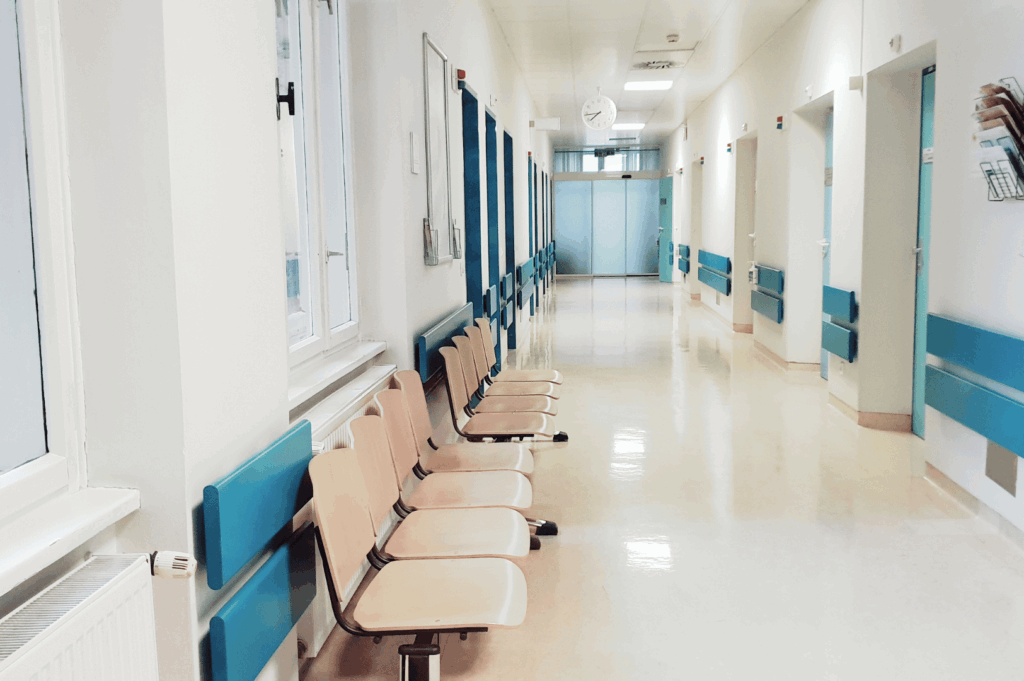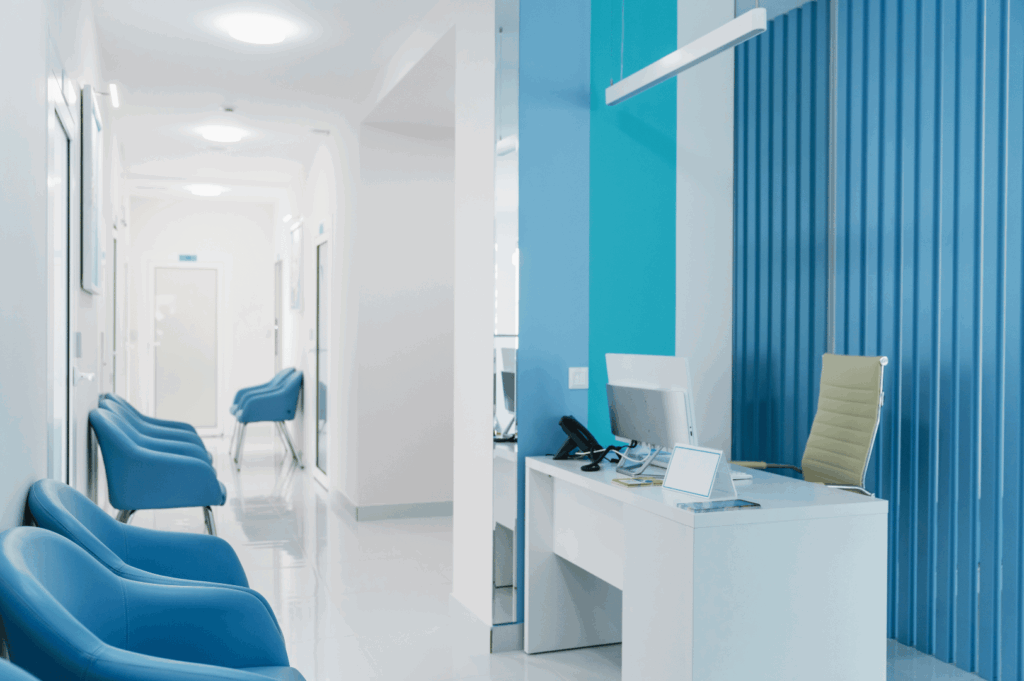Settling into Singapore? Congrats! Among the MRT maps and mouthwatering hawker food, understanding the healthcare system is another must-tackle challenge.
The plus side? Singapore’s healthcare system is ranked among the world’s best for efficiency and outcomes, and is internationally recognized for its quality and efficiency. The caveat: it’s a complex dual system that leaves many newcomers scratching their heads.
This expat healthcare Singapore guide is your shortcut to clarity. Whether you’re puzzling over the Singapore healthcare system for foreigners, comparing public vs private healthcare Singapore, or trying to decipher hospital ward classes and insurance, this guide keeps it light, honest, and practical—so you’ll feel confident when it comes to your health in the Lion City.
1. Public vs. Private Healthcare System: Two Streams, Many Choices

Singapore’s healthcare systems operate on public and private tracks. Both are high quality, but they differ in access, cost, and amenities—making the public vs private healthcare Singapore decision important for expats. Singapore offers both public and private healthcare options, allowing residents to choose based on their needs and preferences.
Misconception Debunked: Public does NOT mean lower quality! Many top doctors work in both sectors. The differences come down to speed, doctor choice, cost, and comfort.
Quick Comparison Table:
This table highlights the key differences between public and private facilities in terms of cost, amenities, and access.
| Feature | Public Healthcare | Private Healthcare |
|---|---|---|
| Cost | Lower, subsidized for locals/PRs | Higher, few subsidies for foreigners |
| Waiting | Longer for non-urgent cases | Usually much shorter |
| Doctor | Assigned doctor | You choose your doctor |
| Facilities | Standard/shared wards unless upgraded | Private rooms, hotel-like amenities |
| Access | Polyclinics/public hospitals via referral | Direct access, GPs & specialists |
Both the public and private sectors have unique strengths and play important roles within Singapore’s healthcare landscape.
2. Navigating Public Healthcare: Polyclinics, Hospitals & Subsidies

Public healthcare is Singapore’s backbone, accessible to all but heavily subsidized only for citizens and PRs. The public health system is designed to provide subsidized healthcare, focusing on disease prevention, health promotion, and affordable healthcare delivery for Singaporean citizens and permanent residents through government support and schemes. As a foreigner, you’ll pay full fees, but the system can still be affordable for basic and some specialist care.
Polyclinics: Your Primary Gateway
Polyclinics are the government’s all-in-one medical hubs, specializing in:
- Acute and chronic conditions (think coughs or diabetes)
- Vaccinations and health screenings
- Child development assessments
How to Use:
- Book ahead on HealthHub SG app for shorter waits—walk-ins accepted but slower.
- All can access polyclinics in Singapore for expats, but at full price.
- Need a specialist? Polyclinics issue referrals, ensuring you pay public (not private) hospital rates.
Public Hospitals & Ward Classes Explained
A hospital visit? You’ll choose a class—a unique feature of the Singapore hospital ward classes system, especially in Singapore’s public hospitals.
- C class wards/B2: Large shared wards (up to 8-10 beds), basic amenities, with C class wards being the most basic and affordable option, heavily subsidized for citizens/PR.
- Class B1: Smaller rooms (4 beds), air-con, more privacy and higher costs.
- Class A: Private rooms, best comfort—costliest tier.
As an expat, pick any class, but subsidies generally don’t apply. For reference: a day in a Class A ward can be S$400+, while C/B2 is several times less.
Subsidy Note: Only certain long-term visa holders (like PRs) get subsidies. Employment Pass or S Pass holders pay unsubsidized rates.
Specialist Outpatient Clinics (SOCs):
- Lower cost than seeing a specialist privately, though expect queues for non-urgent cases.
- Access via polyclinic/hospital referral.
3. The Drive for Efficiency and Pragmatis3. Private Healthcare: Convenience and Speed for a Pricem

Most expats end up here for routine issues, especially if time is money or comfort is king. The private sector is a significant part of Singapore’s healthcare landscape, offering premium services and a wide range of options for those seeking high-quality care.
Private GP Clinics
- Everywhere: Whether it’s Orchard Road or your HDB void deck, a GP is never far.
- Walk-in: No need for appointments; most clinics can see you in minutes.
- Cost: Expect S$30-80 for consultation; more with meds.
Private Hospitals
Leading players like Mount Elizabeth, Gleneagles, and Raffles offer:
- Direct specialist appointments: No referrals needed.
- Specialty centers: Cardiology, oncology, orthopedics, and more.
- Premium service: Private rooms, attentive staff, even gourmet meals.
Costs can escalate fast: Specialist consults from S$150; surgeries, S$10,000s to S$100,000s. The price for the same surgery can be significantly higher in a private hospital compared to a public one, so always check coverage. Private insurers offer additional coverage options for those seeking care at private hospitals. An Integrated Shield Plan can supplement basic insurance and provide access to private hospital wards.
Sidebar: Traditional Chinese Medicine (TCM)
Singapore’s TCM clinics are government-regulated and widely used for acupuncture, herbal remedies, or chronic issues. Well-known brands like Eu Yan Sang have outlets all over the island. TCM is rarely included in standard health insurance but is popular for holistic wellness—just remember to check practitioner qualifications.
4. Healthcare Costs and Financing: What to Expect and How to Pay

Public hospitals are generally more affordable, especially for Singapore citizens and permanent residents who benefit from government subsidies.
A consultation at a public hospital might cost between SGD 20 – SGD 50, while the same visit at a private hospital could range from SGD 50 to SGD 200. Hospital stays show an even bigger difference: public hospitals may charge between SGD 500 and SGD 2,000 per day (depending on ward class), while private hospitals can charge up to SGD 5,000 per day for premium rooms and services.
To help manage these healthcare costs, Singapore has developed a robust financing system. Citizens and permanent residents contribute to Medisave, a mandatory savings account that can be used to pay for medical expenses such as hospitalization, day surgery, and selected outpatient treatments. On top of this, MediShield Life provides a basic health insurance plan that covers large hospital bills and costly treatments, ensuring that no one is left without support for major medical expenses.
For those seeking more comprehensive coverage, Integrated Shield Plans are available. These insurance plans combine MediShield Life with additional private insurance, allowing for higher claim limits and coverage at private hospitals or in higher-class wards at public hospitals. This is especially useful for those who want more flexibility or access to private healthcare.
Expats and non-residents, however, do not have access to government subsidies or Medisave funds, making private health insurance a must. Many choose international health insurance plans, which offer comprehensive coverage for medical care both in Singapore and abroad. These plans can cover everything from routine doctor visits to major surgeries and emergency evacuation, providing peace of mind for globally mobile individuals.
When choosing a health insurance plan, consider your needs, the types of healthcare facilities you prefer, and whether you want coverage for outpatient care, specialist treatments, or private hospital stays.
5. Health Insurance in Singapore for Expatriates: Don’t Skip This Step

Given high healthcare costs for foreigners in Singapore, insurance is your financial safety net. Many employers provide basic coverage, but it pays to read the fine print.
- Employer Insurance: May not include dependents, dental, maternity, or outpatient. Check annual limits.
- Supplemental/Personal Plans: Fill gaps with extra coverage for family, dental, maternity, etc.
- International Plans: Ideal for frequent travelers; covers you across countries.
- Local Plans: Cheaper, but providers may limit hospital choices or benefits. Permanent residents are eligible for government subsidies and insurance options not available to most foreigners.
- Must-haves: Hospitalization (including ICU), surgeries, major outpatient, and emergency evacuation.
- Exclusions: Commonly—pre-existing conditions, pregnancy unless specified, TCM, cosmetic procedures.
Singapore’s healthcare financing relies on the central provident fund, which supports schemes like Medisave and MediShield Life for citizens and permanent residents.
Tip: Registering with a healthcare institution is necessary to access services and make insurance claims. Compare policies for direct billing with major hospitals—saves cash upfront.
6. Health Screening and Prevention: Staying Ahead of Illness

Prevention is a cornerstone of the Singapore healthcare system, and newcomers will find a strong emphasis on health screening and early detection. Citizens and permanent residents have access to a wide range of subsidized or even free health screening programs, including checks for chronic diseases like diabetes and hypertension, as well as cancer screenings such as mammograms and colonoscopies.
The Health Promotion Board (HPB) plays a key role in encouraging healthy living. Through public campaigns, community events, and online resources, the HPB promotes regular exercise, balanced nutrition, and stress management as part of a holistic approach to preventive care.
For those seeking a more tailored approach, private hospitals and clinics offer comprehensive health screening packages. These packages can include a variety of tests—such as blood work, imaging scans, and physical examinations—often bundled for convenience and peace of mind. While these packages are typically more expensive than public options, they offer greater flexibility and can be customized to your personal health needs.
7. Healthcare Services for Specific Needs: Maternity, Children, Elderly & More

Singapore’s healthcare system is designed to support individuals at every stage of life, with specialized healthcare services for maternity, children, the elderly, and those with complex medical needs. Expectant mothers can choose from a variety of maternity packages at both public and private hospitals, which typically include prenatal check-ups, delivery, and postnatal care. Private hospitals often offer more personalized amenities and shorter wait times, while public hospitals provide quality care at more affordable rates.
Families with children benefit from a wide network of pediatric services, available at public and private hospitals as well as specialist clinics. The Community Health Assist Scheme (CHAS) helps lower- and middle-income families by providing subsidies for medical and dental care, making it easier to access essential healthcare services for children.
For elderly residents, Singapore offers a comprehensive range of options, including public and private hospitals, community hospitals, and nursing homes. The ElderShield scheme provides financial assistance for those with severe disabilities, helping to cover long-term care costs and ensuring that seniors receive the support they need.
8. Emergency Healthcare Services Singapore: Quick Reactions, Clear Costs

Singapore’s emergency care is world-class, but knowing where to go for medical treatment in urgent situations can save money (and stress).
What to Bring: Passport, FIN card, insurance documents, and credit card for payments.
Ambulance (995): Use for genuine emergencies—heart attack, stroke, severe injury. Takes you to the nearest public hospital A&E. Fees: $274 (citizen/PR), higher for foreigners.
A&E Departments: These are emergency rooms that prioritize life-threatening cases. For less urgent problems (sprains, minor fevers), be ready to wait (and pay S$120-150 at least for foreigners). Alexandra Hospital is known for relatively quick emergency department wait times among public hospitals.
24-hour Private Clinics: For middle-of-the-night emergencies that aren’t critical, these are fast and efficient. Costlier than a daytime GP, but less crowded and more comfortable than A&E for minor cases.
9. Digital Health Resources and Practical Survival Tips

Good news: Navigating the Singapore medical system is easier than ever thanks to digital tools.
- HealthHub SG App: Book polyclinic visits, track vaccination records, view results.
- Private Hospitals’ Apps: Mount Elizabeth, Raffles, etc. have online booking for consults and telemedicine.
- Language: English predominates, but translation services are on hand if needed. Singapore’s highly trained doctors are accustomed to serving a diverse, international patient base.
- Document Checklist: Passport, FIN card, insurance, and any prior medical records are all smart to bring for your first visit.
- Cultural Note: Singaporean doctors tend to be efficient and may skip the small talk—don’t be shy, just ask direct questions.
- Attending with Kids: Child vaccination records are a must for pediatric visits. Kids’ polyclinic visits tend to be much busier on weekends.
Telemedicine is booming: Many GPs and specialists now offer video consults, and a wide range of medical services can now be accessed online, from consultations to follow-up care—great if you’re stuck at home or avoiding the flu season crowd.
10. Worry Less, Live More

Healthcare in Singapore is renowned for its high standards, accessibility, and comprehensive insurance options. Mastering the Singapore healthcare system for foreigners is about knowing your options, securing solid insurance, keeping your documents handy, and embracing a bit of local efficiency.
Remember, both public and private systems have strengths—combine savvy planning with insider tips, and you’ll make the most out of Singapore’s healthcare system in your new home, which is recognized globally for its excellence and innovative approach.
For up-to-date info, always check the Ministry of Health (MOH) website before making big decisions on hospitals, policies, or new regulations. Welcome to a healthier, happier life in Singapore!

